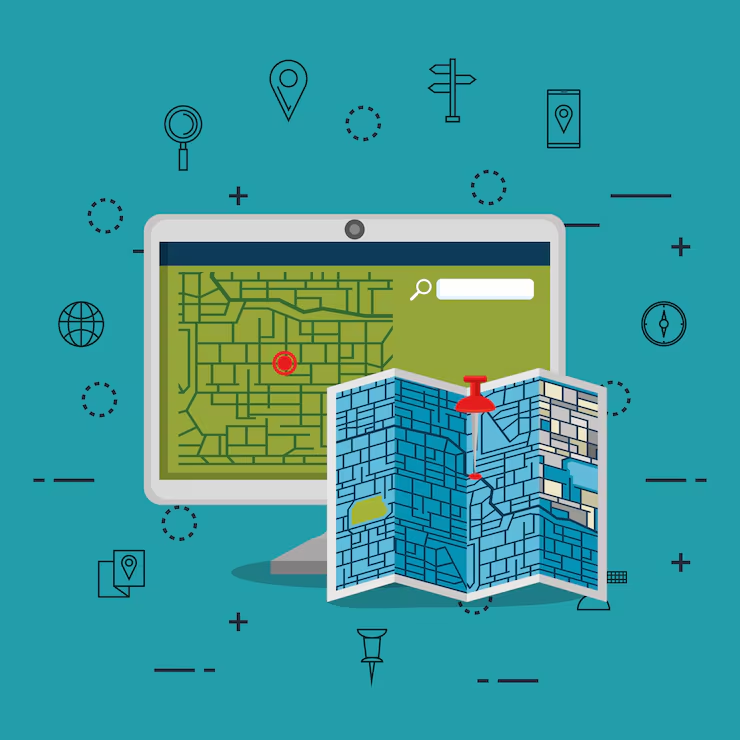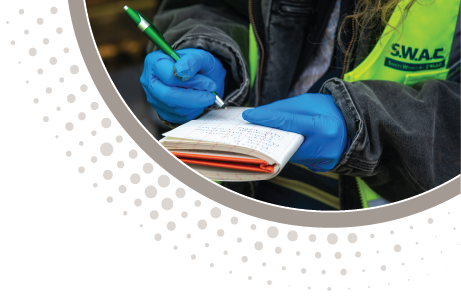Geographic Information Systems and Triad
By: Josh Amos
Triad Engineering, Inc. was founded in 1975 as a geotechnical engineering firm, marking 2025 as its 50th anniversary. That level of success and longevity is just one of the reasons I joined Triad’s Hagerstown office this March. While I’m new to Triad, I’ve spent the past two decades applying spatial and data technologies at environmental and engineering firms. I look forward to continued collaboration with leadership and colleagues across offices and disciplines to further embed geospatial and data technologies into our service offerings.

From a personal perspective, I recognized early in my career the importance of developing a practical skill set to thrive in a competitive consulting environment. Fortunately, I was introduced to the rapidly evolving fields of Geographic Information Systems (GIS), remote sensing, and computer automation. These tools offered a niche complement to the expertise of seasoned professionals solving complex engineering and scientific challenges. I’ve continued to focus on these disciplines ever since.
At Triad, geographic considerations naturally underpin much of our work. Every study, whether it involves environmental monitoring, geotechnical assessments, civil site design, or modeling, requires a thorough understanding of the project landscape. Triad has long excelled at capturing precise field-scale data through accurate survey measurements of terrestrial, aquatic, and subsurface features. These data are then translated into detailed engineering-grade drawings using CADD. As publicly available geospatial datasets expand and analytical tools, both open source and commercial, continue to evolve, we are well positioned to incorporate these advances into our workflows. One near-term focus is improving interoperability between GIS and CADD, enabling our teams to streamline processes, enhance data access, and reduce project costs.
GIS, remote sensing, and data technologies have become standard tools in engineering and environmental fields. In my experience, their strength lies in integrating diverse datasets such as soil characteristics, hydrology, land use, weather patterns, and topography into organized, manageable, and accessible data structures. These tools allow us to offer data-driven insights tailored to the specific geographic context of each project. When paired with spatially resolved demographic and economic data, they further enhance our ability to identify and act on new opportunities in our clients’ best interests.
 Throughout my career, I’ve seen firsthand how the evolution of open-source programming languages like Python and R has created accessible, cost-effective ways to interact with the vast universe of available data. For example, imagery and elevation data captured by drones or airborne sensors can now be efficiently combined with machine learning and image processing techniques to identify and extract key landscape features. This approach significantly reduces manual labor while allowing us to scale and replicate processes across project locations. At Triad, we’re currently leveraging Python to implement image processing algorithms from scientific literature to automate the detection of fractures and lineaments. These features are important indicators of potential groundwater pathways or geologic fault lines.
Throughout my career, I’ve seen firsthand how the evolution of open-source programming languages like Python and R has created accessible, cost-effective ways to interact with the vast universe of available data. For example, imagery and elevation data captured by drones or airborne sensors can now be efficiently combined with machine learning and image processing techniques to identify and extract key landscape features. This approach significantly reduces manual labor while allowing us to scale and replicate processes across project locations. At Triad, we’re currently leveraging Python to implement image processing algorithms from scientific literature to automate the detection of fractures and lineaments. These features are important indicators of potential groundwater pathways or geologic fault lines.
For Triad’s engineers and scientists applying environmental modeling, spatially explicit data is essential. By combining detailed, site-specific survey and monitoring data with broader scale public geospatial datasets, we can better calibrate and refine our models. This integration improves the accuracy of assessments of terrestrial and subsurface conditions, supports project feasibility, and ultimately helps streamline regulatory approvals. It also provides greater clarity and confidence in project planning for our clients.
Looking ahead, my hope is to broader access to geospatial and data-driven solutions across Triad. By empowering teams through spatial analytics and automation, we can unlock new service opportunities, improve operational efficiency, and deliver cost savings for our clients. I value Triad’s collaborative culture and am committed to supporting our tradition of excellence by thoughtfully incorporating geospatial technologies, enhanced data management, and automated workflows into our daily operations.


